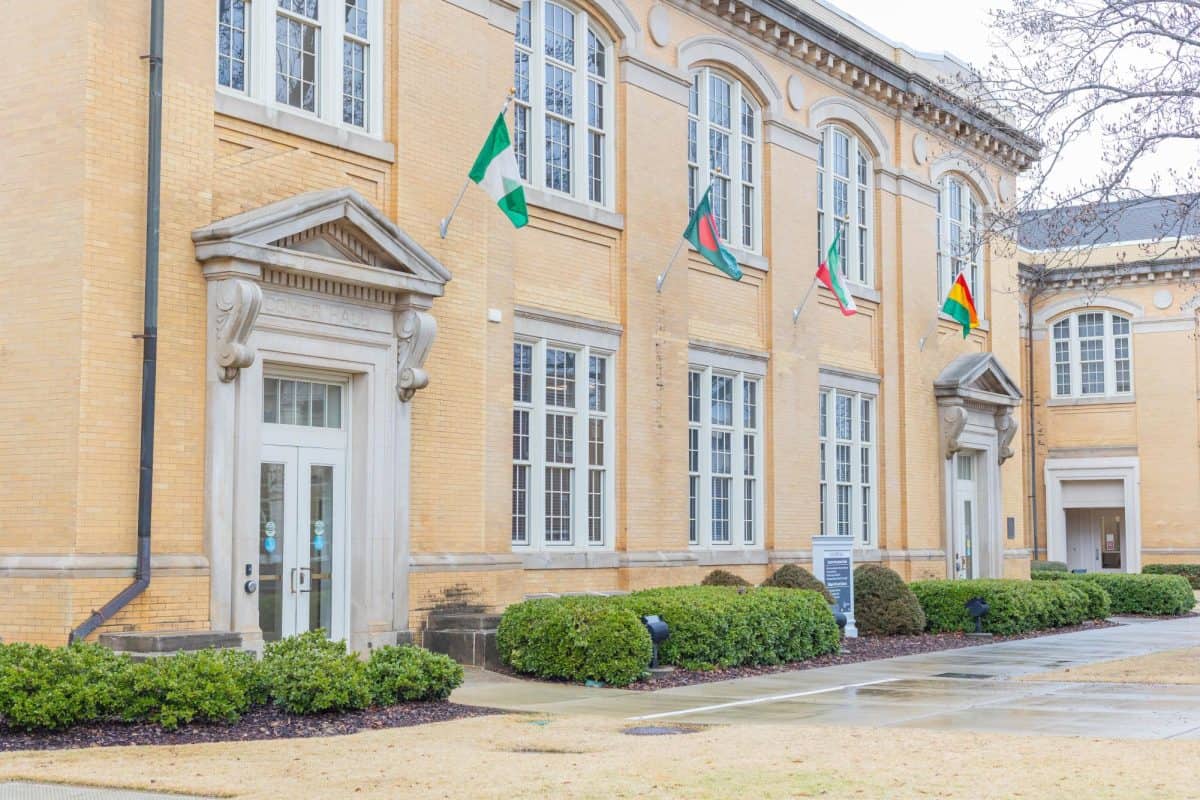For native English speakers in the United States, the skill of learning foreign languages is growing in difficulty.
According to University of Alabama Chinese program director Xiang Zhang, it isn’t for a lack of means. When asked about the state of language education in America, Zhang said, “The United States has the best resources for foreign language learning in the world.” Whether it be online platforms or legitimate educational institutions, it isn’t that America has a lack.
Rather, it’s that there are constraining forces. The geographical immensity and single-language preference of the U.S. complicate and largely remove the necessity of foreign language acquisition. With the growing dominance of English on the world stage, the question for U.S. native speakers is one of both “how?” and “why?”
The “why?” is backed by evidence that’s hard to refute. Benefits of language learning include increased brain health, slower cognitive decline, augmented creativity and improved comprehension of one’s mother tongue. UA Italian program director Fabio Battista said it broadens a person’s horizons and that “not being exposed to a different language and its culture limits one’s perspective, materially and mentally.”
Across the globe, bilingualism and multilingualism — the ability to speak three or more languages — are common. An estimated 60% of the global population is fluent in more than one language, with 43% bilingual and 17% trilingual or beyond. It leaves the 40% monolingual demographic in the minority and makes the U.S., which despite its vastness, has a near-80% monolingual rate, stick out like a sore thumb.
There are many reasons for this divide, and a significant factor is cultural diversity in a geographical context. The world largely consists of small to mid-sized countries, each with distinct tongues and dialects, existing in close proximity; the United States, however, is the fourth-largest nation in the world and only directly borders two countries, both of which are likewise massive.
To put it in perspective, imagine a tourist traveling by car. In Europe, this tourist could theoretically drive from Barcelona, Spain, to Turin, Italy, and then from Turin to Lausanne, Switzerland. Such a drive would take the traveler through regions of northeast Spain where Catalan is spoken in addition to Spanish; the southeast of France, where one might encounter both French and Occitan, a smaller Romance language; the far west of Italy, where one can hear Italian and Piedmontese; and the French-speaking southwest of Switzerland. The drive would take 12 hours and 40 minutes.
In the United States, it would take 12 hours to drive from The University of Alabama to San Antonio, Texas, going through Mississippi and Louisiana. A drive of the same duration could carry one from the University to Washington, D.C., through Tennessee and Virginia. In neither trip would the traveler encounter any other official languages or recognized countries.
This is not to chastise the U.S. nor to exoticize Europe; rather, it shows the reality of culture and language in the United States. There’s an endless array of colorful cultural pockets, but there’s also an overall homogeneity, a national sameness. Unlike the vast majority of the world, it’s an extensive process for native English-speaking citizens to get to a place where another language is primarily spoken, let alone immerse themselves in it. Add in the financial obstacle of international travel or relocation, and it feels impossible.
Compounding this difficulty is the supremacy of English within the U.S. While the bringing-in of outside cultures is a pillar of the country’s history, languages largely get left behind; even with demographics and families that speak their mother tongue at home, the language commonly disappears within generations.
A data trend seeming to combat language loss is the increase in American bilingualism. A study from the American Academy of Arts and Sciences showed that from 1980 to 2018, the percentage of Americans 18 or older who were bilingual (“multilingual” in the article, but bilingual by our previous definition) went from 9.2% to 16.9%.
These numbers can help fight the idea that America is a stubborn mass of monolinguals, but it leaves out a prominent group: native English speakers.
That American Academy study got its number measuring participants who spoke a foreign language at home but reported at least a proficient level of English. Nowhere in the study — and nowhere in general research, it seems — is there a count for English-first Americans who are proficient in another tongue. Given the sub-20% number of multilinguals from non-English homes, environments one would most associate with non-native speakers, that count is likely much lower.
After all, the issues of America’s linguistic deficiency don’t typically lie with non-native speakers. The country lags behind due to a lack of mandated foreign language education and a prevalent attitude that such education isn’t necessary for career success, both issues that stem from native English speakers.
Former UA Spanish instructor Francesc Morales succinctly described the problem, speaking of an “imbalance between having millions of citizens able to speak English and two or three more languages, and at the same time a decrease in learning those very same languages.” Spanish program director Ana Corbalán outlined just how far ahead of Europe is in this area of education: Everyone begins by age 3, and in Spain, English and French are required teaching from middle school onwards.
This touches on a regrettable truth — the relationship between foreign languages and English is predominantly one-way in America. Native tongues voyage in and fizzle out without reciprocity. To quote Medium writer Sam Quillen, “as English speakers, Americans win the linguistic lottery. All the television, music, news, and anything else one would want is ubiquitously available in their native tongue.” With such luxuries, why change?
That question is the massive roadblock in the way of American language learning. With how much English speakers are allowed to stay in their singular linguistic bubble, one is left to wonder how the country can overcome the challenges.
There’s no one specific answer, and many of the best solutions are difficult asks.
Nobody can change the inherent difficulty of the country’s massiveness. The historical cookie crumbled, and the result was an American nation that, while big enough to house most of Europe, lives through a single language. Few countries on earth share a similar geo-linguistic situation.
As for necessity, learners would have to take an approach not revolving around social survival and economic prosperity. The problem there is that such factors are powerful motivators, and they’re the primary drivers of non-English speakers learning the language. As Kaitlin Thomas put it in an EducationWeek article, the demand for English is due to “the perception of it being a language of access and opportunity.” Valentina Mora, a junior communicative disorders and French student who was raised in Colombia, supported this, saying she remembers being told that “if you didn’t know English your future wasn’t as ‘bright.’”
Language learning would need to be more than a utility. Learners would need to realize the attractive psychological and emotional benefits, which go far beyond just being able to ask for directions or order at a restaurant.
It would also need to involve not only a health fix, but a love for people and culture.
Classics professor and program director Kirk Summers outlined this as one of the goals of the University’s language department, saying, “we are training students to engage with people of other cultures on a deep level by studying their literature and through a more profound investigation of their social history and institutions. … Our students seek to understand others and build bridges, which can only be done by knowing the original language.”
For Spanish instructor and Ph.D. candidate Ana Belén Álvarez, such a grand vision of cross-cultural relationships came in the form of a hypothetical. Álvarez once had a pre-med student claiming to only take Spanish because of the University’s language requirement. Knowing that 20% of the country’s population is Latino, Álvarez simply asked: “What would you do if a Spanish speaker came to the ER, where you are working, in crisis, and you can’t even comfort that person?”
For the acquisition of foreign languages to become anywhere near standard for U.S. English natives, there needs to be a new motivation, a fundamental emotional shift. It must go beyond necessity, as the disappointing truth is that most can get by without another language. To go back to Quillen’s article: “Even when [Americans] do leave their vast native country, they can easily get around with English. Except, of course, for those who grew up in immigrant households, there is just no compelling reason to learn a new language.”
Getting past this roadblock requires a large and intentional change. It’s on English-speaking natives to take that immense step forward.









